Physiology of the Gastrointestinal Tract 6th Edition
Physiology of the Gastrointestinal Tract Sixth Edition:
Physiology of the Gastrointestinal Tract, Sixth Edition, a Two-Volume set, covers the study of the mechanical, physical and biochemical functions of the GI Tract by linking clinical disease and disorder, thus bridging the gap between clinical and laboratory medicine while also covering breakthroughs in gastroenterology, such as the brain-gut axis and microbiome. Additionally, information is provided at the organism level, including animal models of gastrointestinal disorders and therapeutic possibilities. The book covers a wide range of conditions, from food allergies, constipation, chronic liver disease and IBS, also exploring emerging techniques to diagnose and normalize functions of the GI tract.
As a highly referenced book, this is a useful resource for gastroenterologists, physiologists, internists, professional researchers and instructors teaching courses for clinical and research students.
Additional ISBNs:
∗ eText ISBN: 0128124261, 978-0128124260, 9780128124260
Table of Contents
Volume 1
Section I: Basic Cell Physiology, Genetics, and Growth of the GI Tract
Chapter 1: Transcription and Epigenetic Regulation
Abstract
Acknowledgment
1.1 Overview of Gene Organization
1.2 Epigenetic Influences
1.3 Anatomy of a Gene Promoter
1.4 Methodology
1.5 Posttranscriptional Processing
1.6 Transport Across the Nuclear Membrane
1.7 Concluding Remarks
Chapter 2: Gastrointestinal Hormones☆
Abstract
2.1 Introduction
2.2 Gastrin
2.3 SST
2.4 Ghrelin
2.5 CCK
2.6 Secretin
2.7 Motilin
2.8 Neurotensin
2.9 GIP
2.10 Proglucagon-Derived Peptides
2.11 PYY
2.12 Insulin-Like Peptide 5
2.13 Serotonin and Histamine
2.14 Closing Remarks
Chapter 3: Growth Factors in the Intestinal Tract
Abstract
Acknowledgments
3.1 Introduction
3.2 Epidermal Growth Factor (EGF) Family
3.3 Transforming Growth Factor-Beta (TGF-β) Family
3.4 Insulin-Like Growth Factor Family
3.5 Hepatocyte Growth Factor (HGF)
3.6 Fibroblast Growth Factors
3.7 Other Growth Factors in the Gastrointestinal Tract
3.8 Conclusion
Chapter 4: Hedgehog Signaling in Gastrointestinal Morphogenesis and Morphostasis
Abstract
4.1 Patterning
4.2 The Hedgehog-Pathway
4.3 The Role of Hh Signaling in the Developing Gut
4.4 Hh Signaling in Homeostasis of the Adult GI Tract
4.5 Hh Signaling and Carcinogenesis of the GI Tract
4.6 Conclusions and Future Perspectives
Chapter 5: The Role of Hippo Signaling in Intestinal Homeostasis
Abstract
Conflict of Interests
5.1 Hippo Pathway
5.2 Hippo Signaling in Intestine Stem Cells (ISCs)
5.3 Hippo Pathway Cross Talk
5.4 Hippo Signaling in Intestinal Injury and Regeneration
5.5 Function in Colon Cancer
5.6 Conclusion
Chapter 6: Notch Pathway Regulation of Intestinal Cell Fate
Abstract
6.1 Notch Pathway Overview
6.2 Regulation of Notch Pathway Activity
6.3 Overview of Intestinal Structure and Development
6.4 Notch Signaling in Intestine
6.5 Notch Signaling and Intestinal Stem and Progenitor Cells
6.6 Cell Fate Specification
6.7 Notch and Human Disease
6.8 Concluding Remarks
Chapter 7: WNT Signaling in the Intestine: Development, Homeostasis, Disease
Abstract
7.1 Introduction
7.2 A Historical Perspective of WNT Signaling in the Intestine
7.3 The Nuts and Bolts of WNT Signaling
7.4 Development of the Intestinal Stem Cell
7.5 WNT/β-Catenin Signaling in the Adult ISC
7.6 Conclusions
Chapter 8: The Cell Cycle
Abstract
Acknowledgment
8.1 Components of the Cell Cycle
8.2 Control of the Cell Cycle
8.3 Checkpoints
8.4 Noncanonical Functions of Cyclins, CDKs, and CKIs
8.5 Pathological Consequences of Cell Cycle Deregulation or Dysregulation
8.6 Conclusion
Chapter 9: Cell Death
Abstract
Acknowledgment
9.1 Apoptosis
9.2 Prostaglandins
9.3 TLR Activation
9.4 Necroptosis
9.5 Autophagy
9.6 Inflammatory Bowel Disease
9.7 Summary
Chapter 10: Molecular Physiology of Gastrointestinal Function During Development
Abstract
Acknowledgments
10.1 Ontogeny of Secretory Function
10.2 Ontogeny of Digestive Function
10.3 Ontogeny of Intestinal Transport
10.4 Ontogeny of Transport Function Along the Vertical and Horizontal Gut Axes
10.5 Developmental Regulation of Gastrointestinal Function
Section II: Neurogastroenterology
Chapter 11: Development of the Enteric Nervous System
Abstract
Acknowledgments
11.1 Origin, Migratory Pathways and Behavior of Enteric Nervous System (ENS) Precursors
11.2 Cellular and Molecular Regulation of ENS Development
11.3 Development of Enteric Neuron Subtypes, Glial Cells, and Ganglia
11.4 Development of Neural Control of Motility
11.5 Conclusions
Chapter 12: Enteric Neurogenesis
Abstract
Acknowledgments
Conflict of Interest
12.1 Overview for Neural Stem Cell (NSC) Transplantation in the Enteric Nervous System (ENS)
12.2 Enteric Neural Plasticity is Induced by ENC-, Pluripotent Stem (PS) Cell-Derived ENS Precursors for the Prevention of Neuro-Intestinal Disease
12.3 Endogenous Enteric NSCs-Induced Enteric Neurogenesis Without and With Cell Transplantation
12.4 Perspectives: Preliminary Functional Studies of Newly Generated Neurons After Impairment of the ENS
Chapter 13: The Physiology and Pathophysiology of Interstitial Cells of Cajal: Pacemaking, Innervation, and Stretch Sensation
Abstract
Acknowledgments
13.1 The Influence of ICC Pacemaker Cells on the Electrical Activity of Smooth Muscle
13.2 The Different Types of ICC
13.3 The Structural Basis of Intercellular Coupling of ICC Within Their Networks and Communication With the Smooth Muscle Layers
13.4 The Electrophysiological Basis of ICC Pacemaking
13.5 ICC Pacemaking in General With a Focus on the Small Intestine
13.6 ICC Pacemaking in the Esophagus
13.7 ICC Pacemaking in the Stomach
13.8 ICC Pacemaking in the Colon
13.9 The Intertwinement of the ICC Networks and the Enteric Nervous System
13.10 ICC as Stretch Receptors
13.11 Hormonal Actions on ICC
13.12 Gastrointestinal Motility Dysfunction Related to ICC Injury or Loss
Chapter 14: Enteric Nervous System Structure and Neurochemistry Related to Function and Neuropathology
Abstract
14.1 Introduction
14.2 Morphological Classification of Enteric Neurons
14.3 First Recordings From the ENS
14.4 Motor Neurons in the ENS
14.5 Interneurons
14.6 Submucosal Neurons
14.7 Spinal Afferents
14.8 Intestinofugal Neurons
14.9 Enteric Neurons in the Stomach
14.10 Role of 5-HT in the ENS and GI Motility
14.11 Neuronal Mechanisms Underlying Peristalsis and Activation of ENS Circuitry
14.12 Role of 5-HT in the Enteric Neurons
14.13 Optogenetic Control of the ENS and GI Transit
14.14 Patterns of Enteric Neuronal Firing During Propulsive Motor Patterns
14.15 Role of Interstitial Cells of Cajalin the Generation of Neurogenic Motor Patterns
14.16 Hirschsprung’s Disease
14.17 Chagas Disease
14.18 Achalasia
Chapter 15: Enteric Nervous System: Brain-in-the-Gut
Abstract
15.1 The Gut’s Brain
15.2 Lower Hierarchical Rungs
15.3 Upper Hierarchical Rungs
15.4 Advancing the Frontier Forward
Chapter 16: Brain Processing of Gastrointestinal Sensory Signaling
Abstract
16.1 Introduction
16.2 Neuroanatomy of GI Sensation
16.3 Thalamus
16.4 Cerebral Cortex
16.5 Insula
16.6 Cingulate Cortex
16.7 Additional Brain Regions
16.8 Neuroimaging Modalities
16.9 Functional Imaging
16.10 Functional Neuroimaging of GI Sensation
16.11 Brain Networks for Visceral Pain
16.12 Structural MRI
16.13 Interindividual Factors and Visceral Pain Endophenotypes
16.14 Conclusions
Chapter 17: Extrinsic Sensory Afferent Nerves Innervating the Gastrointestinal Tract in Health and Disease
Abstract
Acknowledgments
17.1 Introduction
17.2 Anatomy of the Extrinsic Sensory Afferent Nerves Innervating the Gastrointestinal Tract
17.3 Anatomy and Function of the Peripheral Endings of Gastrointestinal Afferents
17.4 Mucosal Afferent Endings
17.5 Tension or Muscular Afferents
17.6 Tension/Mucosal or Muscular/Mucosal Afferents
17.7 Vascular, Serosal, and Mesenteric Afferent Endings
17.8 Mechanically Insensitive or Silent Afferents
17.9 Clinical Relevance of the Extrinsic Sensory Afferent Pathways Innervating the Gastrointestinal Tract
17.10 Animal Models Used to Investigate Sensory Afferent Dysfunction Associated With Prevalent Gastrointestinal Disorders
17.11 Alterations in Extrinsic Sensory Afferent Pathways Innervating the Gut During and After Infection/Inflammation
17.12 Nociceptive and Algesic Mechanisms Contributing to Acute and Chronic Visceral Hypersensitivty
17.13 Antinociceptive and Analgesic Mechanisms to Reverse Acute and Acute and Chronic Visceral Hypersensitivity
17.14 Conclusions and Future Perspectives
Chapter 18: Neuroimaging of Brain-Gut Interactions in Functional Gastrointestinal Disorders
Abstract
Acknowledgments
18.1 Introduction
18.2 The Current Role of Neuroimaging in FGIDs
18.3 Brain Networks in FGIDs
18.4 Utilization of Different Imaging Modalities to Understand FGIDs
18.5 Moving Neuroimaging of the Brain-Gut Axis Into the Future
Chapter 19: Enteric Neural Regulation of Mucosal Secretion
Abstract
19.1 Physiology of Water and Electrolyte Transport Across the Mucosa
19.2 Basic Mechanisms of Absorption and Secretion
19.3 Secretomotor Circuits
19.4 Synaptic Transmission in Secretomotor Circuits
19.5 Local Reflex Circuits
19.6 Enteric Secretomotor Control via the Myenteric Plexus
19.7 Sensory Transduction
19.8 Coupling Motility and Secretion
19.9 Physiological Variations in Secretion—Role of the ENS
19.10 Pathophysiology of Intestinal Secretion
Chapter 20: Neuromuscular Function in the Biliary Tract
Abstract
20.1 Introduction
20.2 The Gallbladder
20.3 The Sphincter of Oddi
20.4 Pathophysiology of Biliary Dysmotility
Chapter 21: Physiology of Gastric Motility Patterns
Abstract
21.1 Overview
21.2 Anatomy of the Gastric Musculature
21.3 Cell Networks Involved in the Control of Gastric Motility
21.4 Gastric Accommodation
21.5 Gastric Mixing
21.6 Gastric Emptying
21.7 Gastric Migrating Motor Complex
21.8 Extrinsic Sensory Innervation of the Upper GI Tract
21.9 Summary
Chapter 22: Clinical and Translational Aspects of Normal and Abnormal Motility in the Esophagus, Small Intestine and Colon
Abstract
22.1 Introduction
22.2 Esophageal Motility
22.3 Gastroesophageal Reflux Disease: Pathophysiologic Mechanisms That Contribute to GERD
22.4 Esophageal Motility Disorders
22.5 Disorders of Esophagogastric Junction Outflow
22.6 Treatment of Hypotensive Motility Disorders
22.7 Small Intestine and Motility
22.8 Small Intestinal Bacterial Overgrowth
22.9 Chronic Intestinal Pseudo-Obstruction
22.10 Large Intestine and Motility
22.11 Constipation
22.12 Outlet Constipation
22.13 Diarrhea
Chapter 23: Neurophysiologic Mechanisms of Human Large Intestinal Motility☆
Abstract
Acknowledgment
23.1 Introduction
23.2 Anatomy and Basic Control Mechanisms
23.3 Colonic Electrophysiology
23.4 Innervation of the Colon
23.5 Measuring Colonic Perception and Motor Patterns
23.6 Colonic Motor Patterns
23.7 In Vitro Studies of Colonic Motility
23.8 Modulators of Colonic Motility
23.9 Disorders of Colonic Motility
Chapter 24: Neuromuscular Physiology of the Pelvic Floor
Abstract
Acknowledgments
24.1 Introduction
24.2 Anatomy
24.3 Pelvic Floor Muscle Activity
24.4 Urethral and Anal Rhabdosphincters
24.5 Pelvic Floor Muscles and Pelvic Organ Function
24.6 Pelvic Floor Muscles and Neurologic Lesions
Section III: Host Environmental Interaction
Chapter 25: Tight Junctions and the Intestinal Barrier
Abstract
25.1 Summary
25.2 Introduction
25.3 Intrinsic and Extrinsic Elements of the Barrier
25.4 The Intestinal Epithelial Barrier and Transcellular and Paracellular Transport
25.5 Protein Components of the TJ
25.6 Regulation of Intestinal Epithelial TJ Barrier
25.7 Clinical Disorders of Intestinal TJ Barrier Defect
25.8 Concluding Remarks
Chapter 26: Gut Barrier: Adaptive Immunity
Abstract
26.1 The Evolution of the Adaptive Immune Response
26.2 The Adaptive Immune Response in the Gastrointestinal (GI) Tract
26.3 Measuring Epithelial Permeability and Mucosal Barrier Function
26.4 Key Players in the Adaptive Immune Regulation of Barrier Function
26.5 Stem Cell Niche and Maintenance of Mucosal Barrier
26.6 Stem Cell Response to Mucosal Injury, Infection, and Inflammation
26.7 Epithelial Cell Proliferation and Differentiation Affects Mucosal Barrier Function
26.8 Adaptive Immune Regulation of Mucosal Barrier
26.9 Targets of Adaptive Immune Mediators
26.10 Consequences of Chronic Impairment of Mucosal Barrier Function
Chapter 27: Gut Barrier: Innate Immunity
Abstract
Acknowledgments
27.1 Introduction
27.2 Composition of the Barrier
27.3 Sensing Provocations to the GI Barrier
27.4 Transition to Adaptive Immunity
27.5 Summary
Chapter 28: Chemosensing in the Colon
Abstract
28.1 Introduction
28.2 Gut Microbiota
28.3 Sensor Cells in the Colonic Mucosa
28.4 Short-Chain Fatty Acids
28.5 Polyamines and the Ca++ Sensing Receptor
28.6 Proton Sensing GPCRs
28.7 Bitter Taste Receptors
28.8 Bile Acid Receptor GPBA
28.9 Olfactory Receptors
28.10 Guanylyl Cyclase-C
28.11 TRP Channels
28.12 Lipopolysaccharide Sensors
28.13 Conclusion
Chapter 29: Mucosal Restitution and Repair
Abstract
29.1 What Is Restitution?
29.2 Intracellular Signals Involved in Restitution
29.3 Intracellular Modulation of Restitution Through Growth Factor Signaling and Polyamines
29.4 Restitution Is a Distinct Cellular Function
29.5 Modeling Restitution With Intestinal Wounding Models
29.6 Regulation of Restitution
29.7 Importance of Mucosal Restitution and Repair
29.8 Concluding Remarks
Chapter 30: Luminal Chemosensing and Mucosal Defenses in the Upper GI Tract
Abstract
30.1 Duodenal Chemosensing Patterns and Mucosal Defense Factors
30.2 Duodenal H+/CO2 Sensing and Spice Sensing
30.3 Esophageal and Gastric Acid Sensing
30.4 Surface pH Regulation via Purinergic Signaling
30.5 Nutrient Sensing in the Duodenum
30.6 TGR5 (GPR131) as an Amplifier for Hormone Release
30.7 Long-Chain Fatty Acid (LCFA) Sensing
30.8 Short-Chain Fatty Acid (SCFA) Sensing
30.9 Glucose Sensing
30.10 Luminal Versus Basolateral Nutrient Sensing
30.11 Other Luminal Chemosensing
30.12 Clinical Perspectives
Chapter 31: Intestinal Tuft Cells
Abstract
31.1 Overview
31.2 Discovery
31.3 Distribution
31.4 Morphology
31.5 Markers
31.6 Ontogeny and Maintenance
31.7 Lineage Specification
31.8 Function
31.9 Concluding Remarks
Section IV: Gut Microbiome
Chapter 32: Gastrointestinal Microbial Ecology With Perspectives on Health and Disease
Abstract
32.1 Introduction
32.2 Overview of Culture-Independent Molecular Techniques for Characterizing the Human Gut Microbiome
32.3 Applying the Principles of Microbial Ecology to Analyze the Human Gut Microbiome
32.4 Membership and Diversity of the Human Gut Microbiome
32.5 Colonization and Succession of the Human Gut Microbiome
32.6 Modulation of the Gut Microbiota
32.7 Bacteria, Their Metabolites, and Human Health
32.8 Perspectives on Health and Disease
Chapter 33: Diet Effects on Gut Microbiome Composition, Function, and Host Physiology
Abstract
33.1 Introduction
33.2 Techniques to Assess Effects of Diet on Microbial Composition and Functionality
33.3 Dietary Inputs and Host/Microbiome Effects
33.4 Diet and Circadian Clock
33.5 Future Perspectives
Glossary
Chapter 34: Influence of the Gut Microbiome on Immune Development During Early Life
Abstract
34.1 Introduction
34.2 Microbiota Influences on the Structural Development and Function of the Immune System Within the Gastrointestinal Tract
34.3 Durable Consequences of Early Life Perturbation of the Microbiota in the Context of Human Disease
34.4 Concluding Remarks
Chapter 35: Gut Microbiome and Metabolism
Abstract
35.1 Introduction: Microbiota: The Intestine’s Best Frenemy Forever
35.2 Direct Impact of Microbiota on Ingested Food
35.3 Modulation of Metabolism by Microbiota-Generated Products
35.4 Indirect Effects of Microbiota on Metabolism
35.5 Concluding Thoughts
Chapter 36: Microbial Physiology of the Digestive Tract and Its Role in Inflammatory Bowel Diseases
Abstract
36.1 The Normal GI Tract Is Composed of Human and Microbial Components
36.2 Microbial Occupation of the GI Tract
36.3 The Role of Microbes in GI Health and Disease
36.4 Methods to Assess Microbial Contributions to IBD
36.5 Theories About How Microbes Cause or Contribute to IBD
36.6 Treatment of the Microbial Component of IBD
36.7 Challenges and Opportunities for the Future of IBD Diagnosis and Therapy
Volume 2
Section V: Physiology of Secretion
Chapter 37: Salivary Gland Secretion
Abstract
37.1 Introduction
37.2 Salivary Gland Anatomy and Structure
37.3 Control of Salivary Secretion
37.4 Cellular Mechanisms of Salivary Fluid Secretion
37.5 Vesicular Secretion of Proteins by Salivary Cells
37.6 Extracellular Vesicles
37.7 Differences in the Secretory Mechanisms of the Major Salivary Glands
37.8 Disruption of Calcium Signaling in the Major Salivary Glands
37.9 The Physiology of Saliva in the Mouth
Chapter 38: The Cell Biology of Gastric Acid Secretion
Abstract
38.1 Cellular Plasticity of Gastric Acid Secretion
38.2 Molecular Mechanism of Hydrochloric Acid Secretion
38.3 Actin Cytoskeleton Plasticity in Parietal Cell Secretion
38.4 Stimulation-Secretion Coupling in Parietal Cells
38.5 Conclusion
Chapter 39: Structure-Function Relationships in the Pancreatic Acinar Cell
Abstract
Acknowledgments
39.1 Organization of the Exocrine Pancreas
39.2 Pancreatic Development
39.3 Structural Organization
39.4 Functional Responses of the Acinar Cell: Protein Synthesis, Vectorial Transport, Modifications, and Sorting
39.5 Cell Signaling
39.6 Acinar Cell Secretion
39.7 Early Acinar Cell Responses in Acute Pancreatitis
Chapter 40: Regulation of Pancreatic Secretion
Abstract
40.1 Patterns of Secretion
40.2 Phases of the Meal Response
40.3 Neural and Hormonal Regulators
40.4 Inhibition of Pancreatic Secretion
40.5 Pancreatic Function Testing
Chapter 41: Bile Formation and the Enterohepatic Circulation
Abstract
41.1 Introduction
41.2 Structure of Bile Acids
41.3 Major Functions of Bile and Bile Acids
41.4 Biosynthesis and Biotransformation of Bile Acids
41.5 Enterohepatic Circulation of Bile Acids
41.6 Bile Secretion and Hepatic Bile Acid Transport
41.7 Intestinal Absorption of Bile Acids
Chapter 42: Mechanisms of Hepatocyte Organic Anion Transport
Abstract
42.1 Introduction
42.2 Mechanisms of Nonbile Acid Organic Anion Uptake
42.3 Mechanisms of Bile Acid Uptake
42.4 Organic Anion Excretion Across the Bile Canaliculus
42.4.4 Summary
Chapter 43: Mechanisms of Hepatocyte Detoxification
Abstract
43.1 Introduction
43.2 Metabolism and Excretion
43.3 Detoxification of Metals
43.4 Liver Self-Defense Mechanisms
43.5 Summary
Chapter 44: Physiology of Cholngiocytes
Abstract
44.1 Biliary Tree
44.2 Characteristic Features of Cholangiocytes
44.3 Ductal Bile Formation
44.4 Regulation of Ductal Bile Formation
44.5 Intracellular Signaling in Ductal Bile Formation
44.6 Intercellular Communication in Biliary Epithelia
44.7 Conclusion
Section VI: Digestion and Absorption
Chapter 45: Molecular Mechanisms of Polarized Protein Trafficking in Epithelial Cells
Abstract
45.1 Introduction to Epithelial Cell Polarity
45.2 Cytoarchitecture and Membrane Compartments in Polarized Epithelial Cells
45.3 Sorting Pathways
45.4 Postendocytic Pathway
45.5 Sorting Signals
45.6 Recognition of Sorting Signals
45.7 Polarized Transport and Delivery
45.8 Polarized Docking and Fusion
45.9 Selective Retention
45.10 Summary
Chapter 46: Sugar Absorption
Abstract
Acknowledgments
46.1 Overview
46.2 SGLT1
46.3 GLUT2 and GLUT5
Chapter 47: Protein Digestion and Absorption
Abstract
47.1 An Overview of Protein Digestion and Absorption
47.2 Role of Gastric and Pancreatic Proteases in Protein Digestion
47.3 Role of Membrane-Bound and Cytoplasmic Peptidases in the Enterocyte in Protein Digestion
47.4 Sites of Absorption of Protein Digestion Products
47.5 Generation of Driving Forces for Amino Acid and Peptide Absorption in the Enterocyte
47.6 Entry of Protein Digestion Products Into Enterocytes Across the Brush Border Membrane
47.7 Fate of Absorbed Amino Acids and Peptides in the Enterocyte
47.8 Exit of Protein Digestion End Products Across the Basolateral Membrane
47.9 Luminal Amino Acids and Gut Microbial Ecology
47.10 Genetic Disorders of Intestinal Amino Acid and Peptide Transport
47.11 Nutritional, Clinical, and Pharmacological Relevance of Intestinal Peptide Transport and Amino Acid Transport
47.12 Regulation of Intestinal Amino Acid and Peptide Transport
47.13 Conclusions and Future Perspectives
Chapter 48: Enterocyte Fatty Acid Handling Proteins and Chylomicron Formation
Abstract
48.1 Overview of Dietary Fat Absorption
48.2 Enterocyte Uptake and Processing of FA From Luminal TAG Hydrolysis
48.3 Intestinal FA Transporters
48.4 Role of Phospholipid Remodeling in Intestinal FA Absorption
48.5 Liver and Intestinal Cytosolic FABP: Role in Intracellular FA Trafficking and Chylomicron Formation
48.6 TAG Synthesis in the ER—Important Enzymes
48.7 Progressive Acylation of G3P Pathway (Kennedy Pathway)
48.8 Distinct Intracellular TAG Pools in the Enterocyte
48.9 Prechylomicron Formation in the ER Lumen and Transport to the Golgi in the PCTV
48.10 Transformation of the Prechylomicron in the Golgi
48.11 Control of Lymph Chylomicron Output: Summary and Future Directions
Chapter 49: Genetic Regulation of Intestinal Lipid Transport and Metabolism
Abstract
49.1 Major Pathways and Genes Involved in Intestinal Lipid Droplet Formation and Triglyceride-Rich Lipoprotein Assembly
49.2 Genetic Defects in APOB and MTTP
49.3 Other Genetic Defects of Intestinal Lipoprotein Assembly and Secretion
49.4 Other Genes Involved in Intestinal Lipoprotein Biogenesis: Apolipoprotein A-I and Apolipoprotein A-IV
49.5 Major Pathways and Genes Involved in Intestinal Sterol Transport
Chapter 50: Digestion and Intestinal Absorption of Dietary Carotenoids and Vitamin A
Abstract
50.1 Introduction
50.2 Carotenoid and Vitamin A Metabolism—Overview
50.3 Dietary Sources and Forms
50.4 Solubilization of Carotenoids and Retinoids
50.5 Digestion of Retinyl Esters
50.6 Digestion of Carotenoid Esters
50.7 Intestinal Absorption of Provitamin A Carotenoids
50.8 Conversion of Provitamin A Carotenoids to Retinoids
50.9 Intestinal Absorption of Vitamin A
50.10 Genetic and Environmental Factors Impacting Vitamin A Status
50.11 Overview
Chapter 51: The Vitamin D System: Biological and Molecular Actions in the Intestine and Colon
Abstract
51.1 Introduction
51.2 Overview of Vitamin D Production and Physiology
51.3 The Molecular Mechanism of Action of 1,25(OH)2D3
51.4 New Insights Into the Regulation of Gene Expression by 1,25(OH)2D3
51.5 The Transport of Calcium Across the Intestinal Epithelium
51.6 Regulation of Calcium Transporter Expression by 1,25(OH)2D3
51.7 Vitamin D Actions in the Colon: A New VDR Ligand, Xenobiotic Metabolism, and Anticarcinogenic and Anticancer Actions
51.8 Vitamin D Therapeutics and the Calcemic Side-Effects
51.9 Summary
Chapter 52: Bioavailability of Vitamin E
Abstract
Conflict of Interest
52.1 Introduction
52.2 VE Fate in the Lumen of the Upper Gastrointestinal Tract During Digestion
52.3 Uptake, Metabolism, and Secretion of VE by Enterocytes
52.4 Factors Modulating the Bioavailability of VE
52.5 Conclusion
Chapter 53: Intestinal Absorption of Vitamin K: Cellular and Molecular Mechanisms
Abstract
Acknowledgment
53.1 Metabolic Role and Effect of Deficiency
53.2 Physiology of Intestinal Vitamin K Absorption
53.3 Molecular Biology of the Intestinal Vitamin K1 Uptake Systems
Chapter 54: Intestinal Absorption of Water-Soluble Vitamins: Cellular and Molecular Mechanisms
Abstract
54.1 Introduction
54.2 Vitamin B1 (Thiamin)
54.3 Vitamin B2 (Riboflavin)
54.4 Vitamin B3 (Niacin, Nicotinic Acid)
54.5 Vitamin B5 (Pantothenic Acid)
54.6 Vitamin B6 (Pyridoxine and Derivatives)
54.7 Vitamin B7 (Biotin)
54.8 Vitamin B9 (Folate)
54.9 Vitamin B12 (Cobalamin)
54.10 Vitamin C (Ascorbic Acid)
54.11 Concluding Remarks
Chapter 55: Water Transport in the Gastrointestinal Tract
Abstract
55.1 Introduction
55.2 Epithelial Fluid Transporting Mechanisms
55.3 Aquaporins
55.4 Fluid Transport Mechanisms and Aquaporins in GI Organs
55.5 Summary and Perspective
Chapter 56: Na+/H+ Exchange in Mammalian Digestive Tract
Abstract
Acknowledgment
56.1 Mammalian Monovalent Cation Proton Antiporter Superfamily
56.2 Membrane Topology and Functional Domains
56.3 Transport Characteristics and Pharmacology
56.4 Gastrointestinal NA+/H+ Exchangers
56.5 Physiological Role of Na+/H+ Exchange in the Digestive Tract
Chapter 57: Intestinal Anion Absorption
Abstract
Acknowledgments
57.1 Mechanisms of Intestinal Chloride Absorption
57.2 Mechanisms of SCFA Absorption
57.3 Mechanisms of Intestinal SO42 − Absorption
57.4 Mechanisms of Intestinal Oxalate Transport
57.5 Conclusions
Chapter 58: Ion Channels of the Gastrointestinal Epithelial Cells
Abstract
58.1 Role of Ion Channels in GI Tract
58.2 Potassium Channels
58.3 Epithelial Na+ Channel (ENaC)
58.4 Anion Channels
58.5 Conclusions
Chapter 59: Molecular Mechanisms of Intestinal Transport of Calcium, Phosphate, and Magnesium
Abstract
59.1 Introduction
59.2 Recommended Nutritional Requirements for Ca2 +, Mg2 +, and Pi
59.3 Intestinal Calcium transport
59.4 Intestinal Phosphate Transport
59.5 Intestinal Transport of Magnesium
59.6 Conclusions
Chapter 60: Mechanisms and Regulation of Intestinal Iron Transport
Abstract
60.1 Introduction
60.2 The Anatomy of Iron Absorption—Specialization of the Proximal Small Intestine
60.3 Dietary and Other Factors Which Influence Iron Absorption
60.4 Iron Transport Across the Enterocyte
60.5 Regulation of Iron Absorption
60.6 Developmental Changes in Iron Absorption
60.7 Effects of Various Diseases on Intestinal Iron Transport
60.8 Conclusions
Chapter 61: Trace Metal Absorption and Transport
Abstract
Acknowledgments
61.1 General Properties of Trace Metal Absorption
61.2 Diet Composition
61.3 Mechanisms of Trace Metal Uptake, Transcellular Movement, and Efflux by the Gastrointestinal Tract
61.4 Copper Absorption
61.5 Zinc Absorption
61.6 Other Trace Metals
61.7 Genetic Variation in Absorption
Section VII: Integrated GI Physiology and Pathophysiology
Chapter 62: The Gastrointestinal Tract and Control of Food Intake
Abstract
62.1 Signals Arising From the Gut in Control of Food Intake
62.2 Vagal Afferent Neurons
62.3 Processing of Information in the Central Nervous System
62.4 The Gut and Changes in Food Intake in Obesity
62.5 Gut Microbiota and Regulation of Food Intake
62.6 Bariatric Surgery
Chapter 63: Mechanisms of Helicobacter pylori-Induced Gastric Inflammation
Abstract
63.1 Introduction
63.2 Conclusions
Chapter 64: Host-Pathogen Interactions in Pathophysiology of Diarrheal Disorders
Abstract
64.1 Introduction
64.2 Enterotoxin-Producing Organisms
64.3 Invasive Pathogens
64.4 Inflammatory Diarrhea Causing Pathogens
64.5 Other Unique Pathogens
64.6 Pharmacopeia
64.7 Summary
Chapter 65: Recruitment of Inflammatory and Immune Cells in the Gut
Abstract
65.1 Introduction
65.2 Overview of the Leukocyte Adhesion Cascade
65.3 The Molecular Components of Intercellular Adhesion Cascade
65.4 Regulation of Leukocyte-Endothelial Cell Interactions in Nonlymphoid Tissues
65.5 Intestinal-Specific Characteristics of Inflammatory Cell Trafficking
65.6 Leukocyte Trafficking During Acute Inflammation
65.7 Leukocyte Trafficking During Chronic Gut Inflammation
65.8 Translational Implications
Chapter 66: Mechanisms of Gastrointestinal Malignancies
Abstract
66.1 Principles of Oncogenesis
66.2 Cardinal Features of Gastrointestinal Cancers
66.3 Genomic Instability
66.4 Novel Molecular Mechanisms Contributing to Gastrointestinal Carcinogenesis
Chapter 67: Neuropathophysiology of the Irritable Bowel Syndrome
Abstract
67.1 Irritable Bowel Syndrome
67.2 Neuropathy in the Brain-in-the-Gut
67.3 Neurogenic Secretion: Diarrhea and Constipation
67.4 Abdominal Pain and Discomfort
67.5 Psychogenic Stress
67.6 Brain-Mast Cell Connection: Implications for IBS
Chapter 68: Pathophysiology of Diarrhea and Its Clinical Implications
Abstract
Acknowledgment
68.1 Introduction
68.2 Physiology of Intestinal Absorption and Secretion
68.3 Definitions of Diarrhea
68.4 Pathophysiology of Diarrhea
68.5 Clinical Manifestations of Diarrhea
68.6 Evaluation and Management
68.7 Conclusions
Index


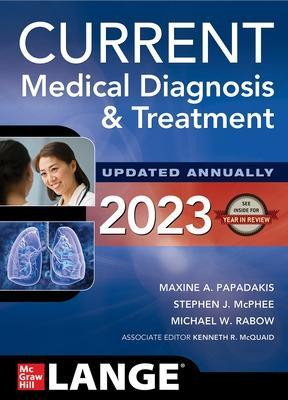
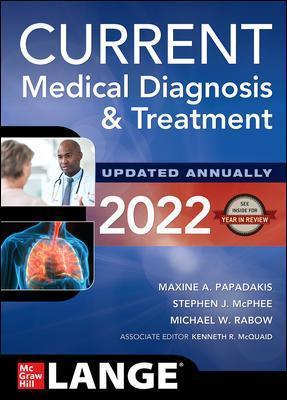
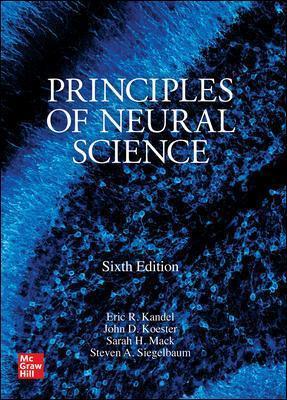





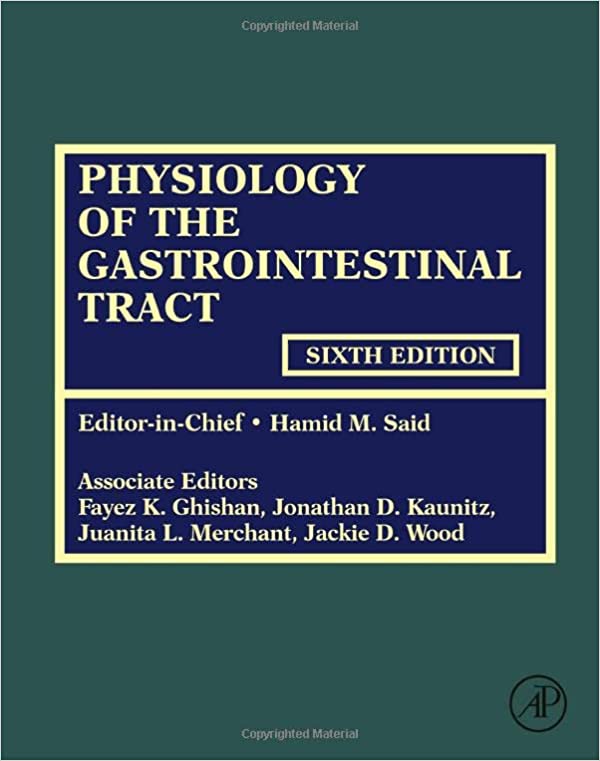





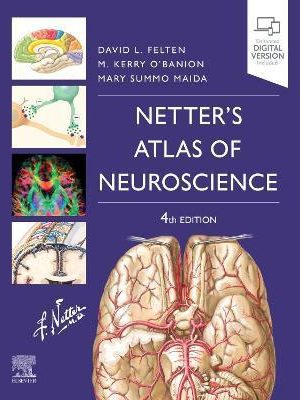

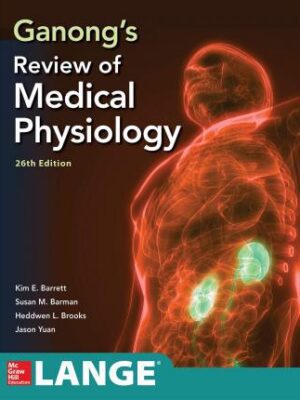
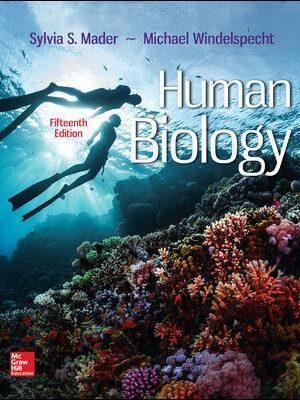

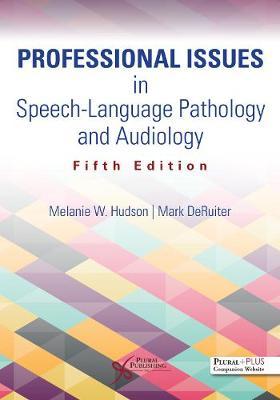
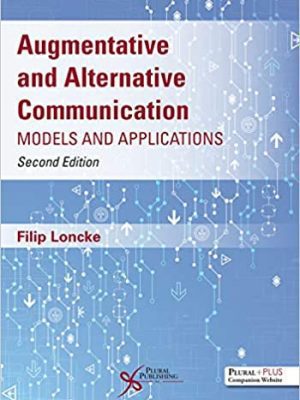
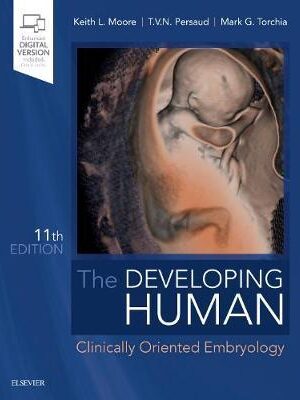
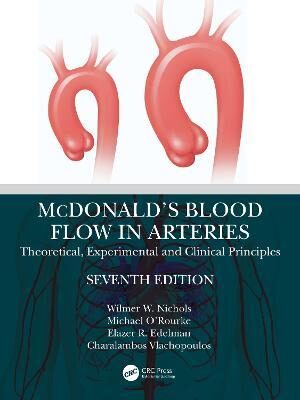
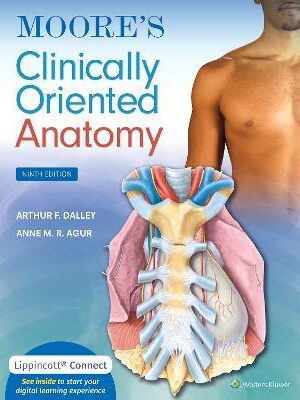
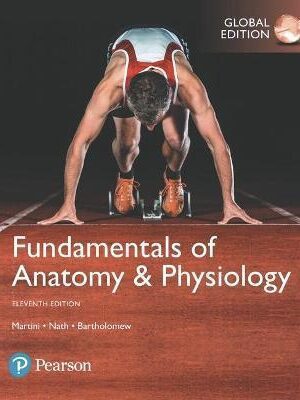
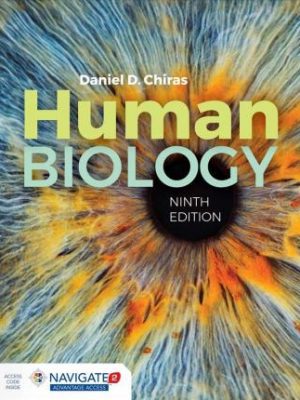
 Dentistry
Dentistry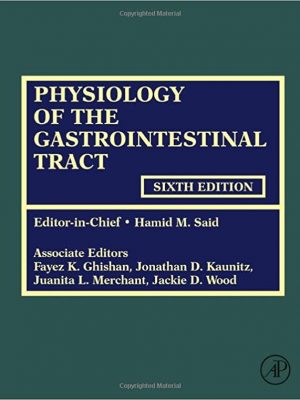
Reviews
There are no reviews yet.